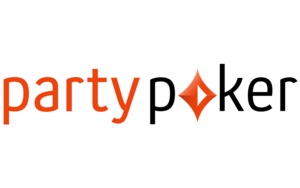Hold’em Betting: Fixed Limit, Pot Limit & No Limit
Fixed Limit, Pot Limit & No Limit betting structures in Hold’em poker games.
 Learning the basic rules of Texas Hold’em or any other Hold’em-oriented poker game is only the first step in acquiring the necessary knowledge to get in on the action. The next step is understanding all the different betting structures that can be applied to the games.
Learning the basic rules of Texas Hold’em or any other Hold’em-oriented poker game is only the first step in acquiring the necessary knowledge to get in on the action. The next step is understanding all the different betting structures that can be applied to the games.
Hold’em isn’t like the traditional 5-card poker games your grandparents played around the kitchen table. You don’t just toss money in the pot, basing bets on the strength of your hand. There are very specific rules that apply to bet sizing in today’s highly structured poker games. You’ll learn about each of them in the following guide to Hold’em betting limits.
Fixed Limit, Pot Limit & No Limit Betting Structures
There are three limits in which Hold’em poker games can be played. Fixed limit is designed to keep the pots small, and is often best for less experienced players with a smaller bankroll. Pot limit games start out low, but the pots can grow much larger as each hand progresses. No limit games, as the name suggests, apply no restrictions to bets and raises. Continue reading to learn more about each limit structure.
Fixed Limit Betting
Fixed limit (FL) Hold’em games offer more security for your bankroll. Bets are limited to the stakes of the game. In a $1/$2 FL poker game, all bets and raises are restricted to $1 in the first two rounds of betting (pre-flop and post-flop). For the last two rounds of betting (turn and river), all bets and raises must be equal to $2.
Due to these confined limits, all-in bets are prohibited, unless a player has less than, or just enough, chips to meet the required bet size. If you’re a novitiate with a small bankroll and want to make it last as long as possible, FL Hold’em games are a good choice.
Pot Limit Betting
Pot limit (PL) games aren’t too common in Texas Hold’em, but are vastly preferred in Omaha Hold’em poker games. The concept behind PL betting is that minimum bets remain low—equal to the chosen stakes—but the maximum bets get progressively larger throughout a hand—always equal to the current size of the pot.
In a $2/$4 PL game, $2 is the minimum bet/raise in the first two rounds of betting (pre-flop and post-flop), increasing to minimum $4 bets/raises in the final two rounds (turn and river). The maximum bet will rise throughout the hand, depending on how many bets/raises are placed.
For example, in $2/$4 PL, the small blind ($1) and big blind ($2) bets would put the pot at $3 to start. The next player to act could call the big blind ($2), bringing the pot to $5, then raise up to $5 more (the current size of the pot). If he does so, the pot would now have $10 in it, giving the next player the choice of calling the current $7 bet, then raising up to $17 (the new pot total).
No Limit Betting
No limit (NL) betting structures are by far the most common in Texas Hold’em. Even most inexperienced players choose NL poker games because of their simplicity, despite the fact that they can become the most expensive.
In these games, the minimum bets are equal to the low-end stakes in the first two rounds of betting (pre-flop and post-flop), and rise to match the high-end stakes for the final rounds (turn and river). There is no maximum limit, allowing players to shove any amount, up to their entire stack, into the pot at any time.
Party Poker Canada, the most trusted Canadian gaming destination, and our editor’s pick for two years, now offers a wide variety of popular card games: from Texas Hold’em, to Omaha, to 7 card stud, to Limit Hold’em and even casino games like blackjack. Play for fun, for free, or play for real, for real money that is ! Our editorial pick for 2023.

www.PartyPoker.com
 (Reminder to Gamble Responsibly)
(Reminder to Gamble Responsibly)




